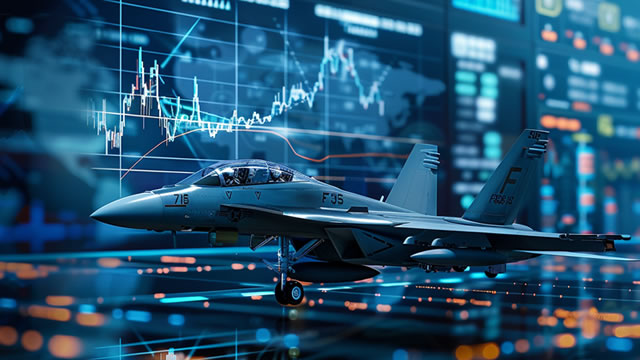Shares of Lockheed Martin Corp. (LMT – Free Report) plunged 16.1% in the past three months, underperforming the Zacks Aerospace-Defense industry’s decline of 7.2% and the broader Zacks Aerospace sector’s loss of 3.9%. It also lagged the S&P 500’s return of 5.6% during the same time period.
 Image Source: Zacks Investment Research
Image Source: Zacks Investment Research
On the contrary, a stellar performance has been offered by other aerospace manufacturers, such as Boeing (BA – Free Report) , Airbus Group (EADSY – Free Report) and Embraer (ERJ – Free Report) , whose shares have witnessed a surge of 18.7%, 10.6% and 3%, respectively, over the past three months.
With the LMT stock sinking recently, individuals may rush to divest it from their portfolio. However, before making any hasty decision, it would be prudent to take a look at the reasons behind the surge, the stock’s growth prospects as well as risks (if any) to investing in the same. The idea is to help investors make a more insightful decision.
What Caused LMT Stock’s Downfall?
In October 2024, Lockheed released its third-quarter 2024 results, wherein its revenues worth $17.28 billion lagged analysts’ expectations. This might have hurt investors’ confidence in the stock, leading to the initial downward price movement in the past three months.
LMT’s share price decline reflects investor concerns over labor shortages, particularly skilled workers, affecting aerospace-defense firms like Lockheed. According to a study by the Aerospace Industries Association, 29% of industry employees are over 55, with retirements expected to create a gap of 3.5 million workers by 2026. As aircraft production ramps up, these shortages may hinder Lockheed’s ability to meet delivery timelines, exacerbating investor apprehensions about its operational and financial performance.
Will LMT Stock Recover?
The global defense industry’s growth outlook remains robust due to heightened geopolitical tensions, leading to increased defense spending worldwide. As the largest U.S. defense contractor, Lockheed benefits from consistent contract flows for its combat-proven products from the Pentagon and U.S. allies. These contracts strengthen its backlog, which rose sequentially to $165.69 billion as of Sept. 30, 2024, from $158.34 billion, supporting LMT’s revenue growth and enhancing bottom-line prospects.
The consensus estimate for LMT’s long-term (three-to-five years) earnings growth rate is pegged at 4.5%.
Solid order flow also tends to boost LMT’s financial stability. Lockheed’s cash and cash equivalents at the end of the third quarter of 2024 totaled $3.15 billion, while its current debt was $0.14 billion, indicating the stock’s strong solvency position in the near term.
However, a quick sneak peek at its near-term earnings and sales estimates mirrors a different growth story.
LMT Earnings Estimates Sending Mixed Signals
The Zacks Consensus Estimate for 2024 and 2025 sales reflects an improvement of 5.5% and 4.1%, respectively, year over year. Earnings estimate for 2024 indicates a year-over-year deterioration, while the same for 2025 implies an improvement.
On the other hand, the bottom-line estimate for the fourth quarter of 2024 and 2025 suggests a downward movement of 1.2% and 0.8%, respectively, over the past 60 days. This indicates analysts’ declining confidence in the stock.
 Image Source: Zacks Investment Research
Image Source: Zacks Investment Research
 Image Source: Zacks Investment Research
Image Source: Zacks Investment Research
Headwinds to Consider Before Choosing LMT Stock
Despite being a prominent defense contractor, Lockheed faces some notable challenges and one should consider them before adding this stock to his/her portfolio. Lockheed has several contracts with the Türkish industry for the Türkish Utility Helicopter Program (“TUHP”). U.S. sanctions imposed in 2020 affected Lockheed’s ability to execute TUHP contracts, leading to force majeure notices. The contracts may be negotiated to be restructured or terminated, either in whole or part. As a result, Lockheed could be at risk of recording significant reach-forward losses in the future.
Moreover, Lockheed’s Canadian Maritime Helicopter Program (“CMHP”), which involves the design, development and production of CH-148 aircraft, has been facing performance issues lately, including delivery delays. The Royal Canadian Air Force’s flight hours have been significantly less than anticipated. This has affected program revenues and the recovery of Lockheed’s costs under this program. As of Sept. 30, 2024, the company’s cumulative losses in relation to CMHP were approximately $100 million.
LMT Stock Trading at a Premium
In terms of valuation, LMT’s forward 12-month price-to-earnings (P/E) is 17.47X, a premium to its peer group’s average of 15.80X. This suggests that investors will be paying a higher price than the company’s expected earnings growth compared to that of its peers.
 Image Source: Zacks Investment Research
Image Source: Zacks Investment Research
What Should an Investor Do?
To conclude, investors interested in Lockheed should wait for a better entry point, considering its premium valuation and dismal performance at the bourses lately.
However, those who already own this Zacks Rank #3 (Hold) stock may stay invested as the company’s financial stability, upbeat long-term estimates and solid presence in the global defense industry offer solid prospects.
You can see the complete list of today’s Zacks #1 Rank (Strong Buy) stocks here.
Financial Market Newsflash
No financial news published today. Check back later.









